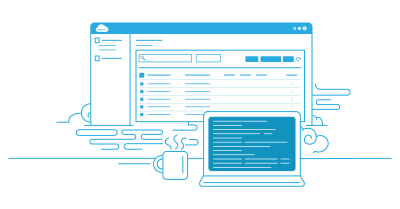Managing storage costs for variable workloads in Amazon S3 presents a unique challenge for organizations dealing with fluctuating data access patterns. Whether you’re handling seasonal data spikes, development environments, or media libraries with unpredictable popularity, traditional storage tier management often results in either overspending on high-performance storage or compromising accessibility with lower-cost tiers. We explors how S3 Intelligent-Tiering addresses these challenges through automated storage optimization and cost management.
Understanding S3 Intelligent-Tiering
Intelligent-Tiering includes four distinct access tiers that automatically optimize your storage costs based on access patterns:
- Frequent Access (FA): Default tier, equivalent to S3 Standard
- Infrequent Access (IA): After 30 days of no access
- Archive Instant Access: After 90 days of no access
- Deep Archive: After 180 days of no access
The primary advantage is the elimination of retrieval fees when accessing data, setting it apart from traditional IA tiers.
Cost Analysis for Variable Workloads
Let’s examine a real-world scenario with 100TB of data:
“`python
# Monthly costs (approximate)
standard_storage = 100 * 1024 * 0.023 # $2,355.20
intelligent_tiering = (
(40 * 1024 * 0.023) + # 40TB in FA
(30 * 1024 * 0.0125) + # 30TB in IA
(30 * 1024 * 0.0036) # 30TB in Archive
) # $1,357.82
monthly_savings = standard_storage – intelligent_tiering
# $997.38 saved per month
“`
Implementation Strategy for Variable Workloads
Enable Intelligent-Tiering at the bucket or prefix level to automatically optimize storage costs based on access patterns.
Monitoring and Optimization
Implement CloudWatch metrics to track:
- BytesPendingTier
- BytesTransitionedToIA
- BytesTransitionedToArchive
Set up alerts for unexpected transitions that might indicate application issues.
Best Practices for Variable Workloads in Amazon S3
- Tag objects by application/workload for granular cost analysis
- Enable lifecycle rules alongside Intelligent-Tiering for object expiration
- Monitor transition metrics to identify access pattern changes
- Use bucket analytics to validate cost savings
Optimal Use Cases for Intelligent-Tiering
Perfect for:
- Media libraries with varying popularity
- Data lakes with unpredictable query patterns
- Backup archives with occasional restores
- Development environments with sporadic access
Not recommended for:
- Objects smaller than 128KB (monitoring fees exceed savings)
- Predictable access patterns where standard lifecycle policies suffice
Cost Optimization Strategies
- Use S3 Storage Lens to analyze usage patterns
- Set up detailed monitoring in Cost Explorer to track savings over time
Intelligent-Tiering for Variable Workloads in Amazon S3
The implementation of S3 Intelligent-Tiering represents a significant advancement in managing variable workload storage costs. By automatically optimizing storage tiers based on actual usage patterns, organizations can achieve substantial cost savings while maintaining performance and accessibility. The key to success lies in proper implementation, continuous monitoring, and alignment with organizational needs. For solution architects managing variable workloads, S3 Intelligent-Tiering offers a powerful tool that combines cost efficiency with operational excellence, potentially reducing storage costs by up to 40% while eliminating the complexity of manual tier management. As data volumes continue to grow and access patterns become increasingly unpredictable, the automated approach to storage optimization becomes not just a cost-saving measure, but a fundamental component of modern cloud architecture.



Leave A Comment